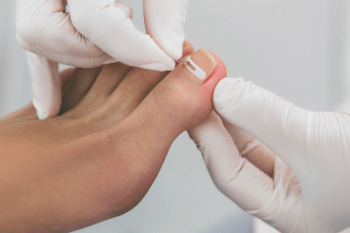
When grappling with the discomfort of ingrown toenails, partial and total nail avulsion emerges as a viable solution. Partial nail avulsion involves the removal of a portion of the affected nail, addressing the ingrown edge, and providing relief. This procedure aims to eliminate the problematic segment while preserving the overall integrity of the nail. Conversely, total nail avulsion involves completely removing the toenail, offering a more comprehensive approach to severe or recurrent ingrown toenails. Both procedures are typically performed under local anesthesia to minimize discomfort. Proper postoperative care is vital to promote healing and prevent complications following avulsion. Understanding the differences between partial and total nail avulsion allows individuals to make informed decisions in collaboration with podiatrists. If you have developed an ingrown toenail, it is strongly suggested that you are under the care of a podiatrist who can determine if one of these types of surgery is right for you.
Ingrown toenails may initially present themselves as a minor discomfort, but they may progress into an infection in the skin without proper treatment. For more information about ingrown toenails, contact Gabrielle Clark, DPM of LA Feet Foot & Ankle Center, Inc. Our doctor can provide the care you need to keep you pain-free and on your feet.
Ingrown Toenails
Ingrown toenails are caused when the corner or side of a toenail grows into the soft flesh surrounding it. They often result in redness, swelling, pain, and in some cases, infection. This condition typically affects the big toe and may recur if it is not treated properly.
Causes
- Improper toenail trimming
- Genetics
- Improper shoe fitting
- Injury from pedicures or nail picking
- Abnormal gait
- Poor hygiene
You are more likely to develop an ingrown toenail if you are obese, have diabetes, arthritis, or have any fungal infection in your nails. Additionally, people who have foot or toe deformities are at a higher risk of developing an ingrown toenail.
Symptoms
Some symptoms of ingrown toenails are redness, swelling, and pain. In rare cases, there may be a yellowish drainage coming from the nail.
Treatment
Ignoring an ingrown toenail can have serious complications. Infections of the nail border can progress to a deeper soft-tissue infection, which can then turn into a bone infection. You should always speak with your podiatrist if you suspect you have an ingrown toenail, especially if you have diabetes or poor circulation.
If you have any questions, please feel free to contact our offices located in New Orleans, and Metairie, LA . We offer the newest diagnostic and treatment technologies for all your foot care needs.
